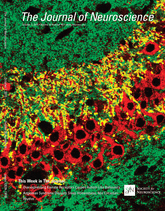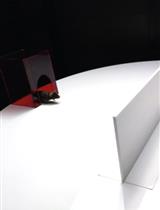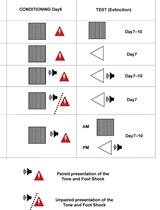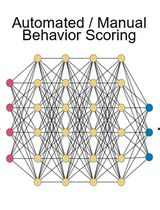- EN - English
- CN - 中文
Sensitive Assessment of Hippocampal Learning Using Temporally Dissociated Passive Avoidance Task
用时间解离性被动回避任务对海马依赖型学习敏感性的评估
发布: 2016年06月05日第6卷第11期 DOI: 10.21769/BioProtoc.1821 浏览次数: 8788
评审: Soyun KimAdler R. DillmanXi Feng
Abstract
The temporally dissociated passive avoidance (TDPA) paradigm is a variant of passive avoidance testing, and allows for more sensitive investigation of mild impairments in avoidance learning. Passive avoidance learning measures the latency to enter a “dark” context in which an aversive stimulus (foot shock) has been previously experienced using a light-dark box paradigm. Briefly, the animal is placed into the light side of the box and the time spent to cross into the dark side is measured. After entry into the dark chamber, the animal receives a mild (0.4-1.6 mA) footshock and is removed from the box. After a period of time, typically 24 h (note that this is entirely dependent on whether various levels of memory retention, e.g., short or long, are being measured), the animal is placed back into the box and cross-over latency is measured. Passive avoidance is learned after one trial and results in a robust increase in crossover latency. This behavior requires the association between a normally neutral environment and an aversive stimulus, and is dependent on hippocampal function (Stubley-Weatherly et al., 1996; Impey et al., 1998). TDPA extends this learning across multiple once-daily trials, producing a more graded and malleable latency score, and thus allows a more sensitive evaluation of changes in hippocampal function The task remains dependent on an intact hippocampus (Zhang et al., 2008), and subtle changes in hippocampal gene expression can result in robust alterations in TDPA latency scores (Eagle et al., 2015). We describe here a common method used to assess TDPA learning in mice.
Keywords: Memory (记忆)Materials and Reagents
- Adult (7 weeks or older) mice (C57BL/6J) (the Jackson laboratory)
Note: C57BL/6J mice are typical, though alternate strains and ages of mice may also be used. Mice are housed singly or in groups of 4-5 per cage. Conditions should comply with the Guide for the Care and Use of Laboratory Animals, 8th ed. (https://grants.nih.gov/grants/olaw/Guide-for-the-Care-and-use-of-laboratory-animals.pdf). See Animals considerations in Notes for more details. - Ethanol (70% volume/volume) diluted in distilled water
Equipment
- Light-dark box (14 in. W x 7 in. D x 12 in. H) equipped with overhead houselight (light side only), guillotine-style door, drop pan, and shock-capable grid flooring (Coulbourn Instruments, model: H10-11M-PA )
- Precision animal shocker (Coulbourn Instruments, model: H13-15 ) and cable
- Video camera, IR-capable (Panasonic Corporation of North America, model: WV-CP304 ), mounted in front of box with side-view of light chamber and door
- Timer
- Sound-attenuating cubicle, as needed
Note: For example, Coulbourn Instruments provides a range of isolation cubicles in different sizes (H10-24 series) that are suitable for the needs of this experiment.
Procedure
文章信息
版权信息
© 2016 The Authors; exclusive licensee Bio-protocol LLC.
如何引用
Readers should cite both the Bio-protocol article and the original research article where this protocol was used:
- Eagle, A. L., Wang, H. and Robison, A. J. (2016). Sensitive Assessment of Hippocampal Learning Using Temporally Dissociated Passive Avoidance Task. Bio-protocol 6(11): e1821. DOI: 10.21769/BioProtoc.1821.
-
Eagle, A. L., Gajewski, P. A., Yang, M., Kechner, M. E., Al Masraf, B. S., Kennedy, P. J., Wang, H., Mazei-Robison, M. S. and Robison, A. J. (2015). Experience-dependent induction of hippocampal DeltaFosB controls learning. J Neurosci 35(40): 13773-13783.
分类
神经科学 > 行为神经科学 > 学习和记忆
您对这篇实验方法有问题吗?
在此处发布您的问题,我们将邀请本文作者来回答。同时,我们会将您的问题发布到Bio-protocol Exchange,以便寻求社区成员的帮助。
Share
Bluesky
X
Copy link














